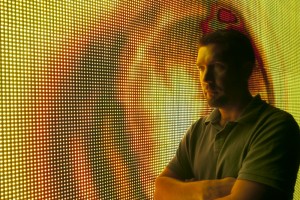Zen and the Art of Entertainment Lighting, Part 1
Posted on January 26, 2012Written by Mike Graham, product manager for CHAUVET Professional
“I know nothing, but you know less. Together, we will learn and become Masters.” ~ Michael Thomas, Bartender and friend 1995
When you start working on a show, you walk in a blank slate. You know nothing of what the show will be. Often times, the people who hired you don’t know either. When I started as a bar-back in 1995 at Elwood’s Dixie BBQ in Delray Beach Fla., I didn’t know the difference between a Corona and Cuervo. By the end of my first night I did, right into the nearest garbage can.
By the time I got to work with Mike Thomas, I was already a good bar-back, but I really wanted to be a bartender. I convinced Mike that I would work as hard as I could to prove to him that I could do it. One night after a particularly long shift, he let me in on a little secret. The above quote is one of the most profound things I had ever heard at that time. Keep in mind that I was 21 and was about to become the youngest bartender in town. Mike explained to me that the trick was to become part of the environment over time. I had to let go of any pre-conceived notions that would interfere with what was going on around me—to open up my senses and to anticipate the next action. Eventually, as we worked together, we became Masters of our world. At the end, the key was he hid nothing from me, or I from him.
Entertainment lighting is not that much different. We walk in, as supposed Masters of our craft, to build something from nothing and start from scratch. We must open ourselves up to the harsh cold reality that we know nothing of the pending plan or the outcome. We must also shed any pre-conceived notions that we do. We must not hide anything from others just as nothing is hidden from us. We must know this completely.
 During the first production meeting, we must formulate a plan of action. What is the intent of our show? What do we want people to take away from their experience? This must be our guide from start to finish. The show must be an extension of the people who put it together. If it is not, then the show will fail. We have a responsibility to connect with the experience that will become our driving force for the show.
During the first production meeting, we must formulate a plan of action. What is the intent of our show? What do we want people to take away from their experience? This must be our guide from start to finish. The show must be an extension of the people who put it together. If it is not, then the show will fail. We have a responsibility to connect with the experience that will become our driving force for the show.
For example, in 2011, CHAUVET as a company embraced a theme of INfected. For our tradeshow booths at LDI, we showed that not only did we come up with a great set of booths we knew and understood our message so purely and so strongly that we produced a phenomenal show. By virtue of the fact that we made conscious and sub-conscious decisions—completely embrace this theme—we were successful in driving the message. (See below.)
The key is that one must know, not think, that they have put down the best ideas they have for the show. Then nothing is held back. The designer must have clear vision of what the producer wants to see even if the producer does not. The designer must start to visualize from the first meeting what the outcome will be.
Often times when working with musical acts, I can hear colors for songs. I see melodies as lights moving and patterns shifting from spot to spot on a stage. I start to create visuals in my head that become cues in the show. From these images, I see structures that become the lighting rig. I can see the gobos and prisms interacting with washes of various colors. I can see it all so clearly in my head that laying it out onto a controller becomes a necessity as much as the songwriter must get the words onto paper.
Free from Imagining
“One should not imagine oneself to be one with the eye or independent of it or the owner of it. The same with ear and all the other senses, including the mind. Nor should one imagine oneself to be identical with the world or contained in it or independent of it or the owner of it. In this way, free from imaging, one no longer clings to the things of the world. When one no longer clings, there is no more agitation, insecurity, and worry. Being no longer worried, one can reach into the depth of oneself and understand that where there has been lost there is now fulfillment.” ~ “Samyutta Nikaya” of the Buddha
The point is you must free your mind enough to imagine not what your vision is, but rather to know what your vision is. You must see your vision clearly in your mind to open up and let it become reality. When you know your vision doubt, worry, and stress float away because you have the security of knowing.
Now that you know your direction, the next step is to create something.
Award-winning CHAUVET Professional 2011 LDI booth :
Read Zen and the Art of Entertainment Lighting, Part 2
Read Zen and the Art of Entertainment Lighting, Part 3
